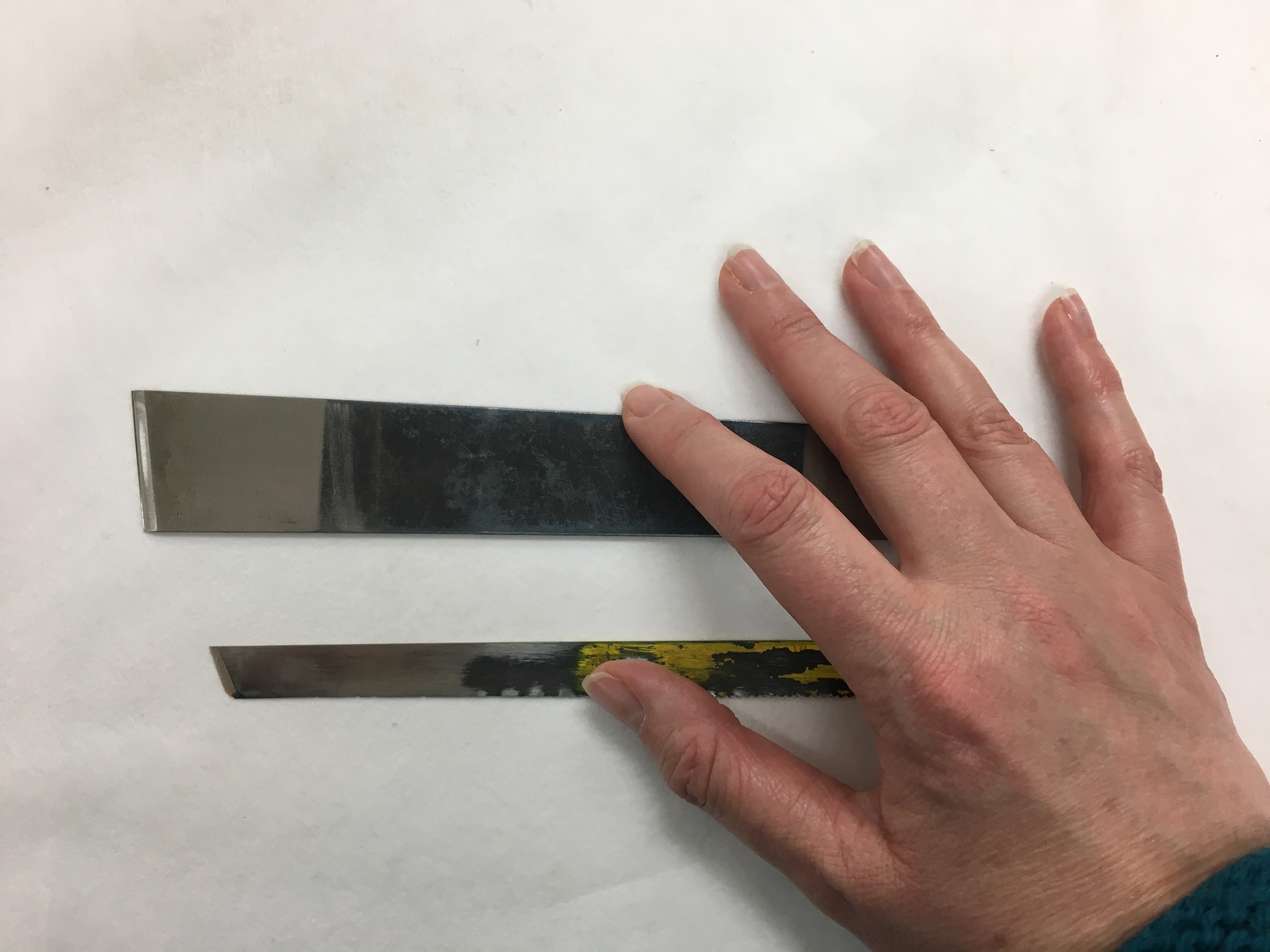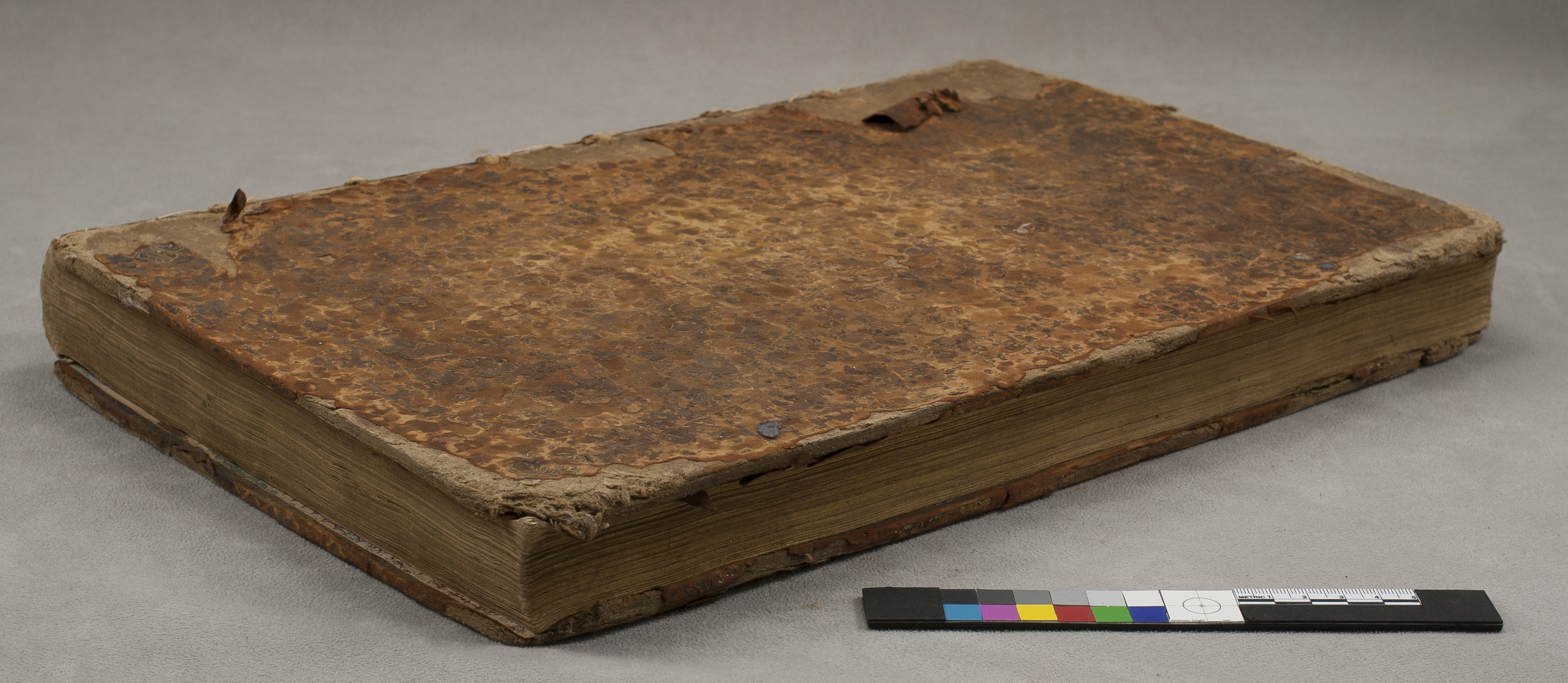Ben Franklin Is Rendered Spineless
After thoroughly documenting Ben Franklin’s 1760 Book of Common Prayer (see posts one and two of this series), I was ready to begin conservation treatment. Two of my major goals were to stabilize the vertical split in the book’s spine and to reattach the detached front cover. At first, I thought this would be a simple process. Silly me.
Franklin’s Book of Common Prayer was a tightback binding, meaning that the leather covering the book was glued directly to the spine of the book block, or the folded and sewn paper sections that make up the printed text. The horizontal bumps on the spine, which many people think are purely decorative, are actually the cords that the book was sewn over. The spines of tightback books often split vertically as the glue becomes old and brittle, particularly if a book is left open to the same pages for a long time.
To close the split without disbinding the whole book, I needed to be able to lift the leather from the spine of the book and set it aside to be reattached later. Then I could line the exposed spine of the book block with new layers of paper and cloth, which would support the rounded shape of the spine and close the split. I could reattach the front board and secure the attachment of the back board by making the new cloth linings extra wide, and adhering them beneath the lifted leather at the spine edges of the boards.
This process—in which the original spine material is removed and replaced or reinforced—is known as rebacking. To lift the original leather, conservators use a sharp, angled knife known as a lifting knife. They push it through the leather a little bit at a time, splitting it along the interface where it had been glued. The problem in this case, as I quickly discovered, was that the leather was impossibly weak and brittle. Each time I inserted my knife, the leather powdered and fragmented around the blade, and I came away with leather dust (see above).

Several factors probably contributed to this dismal state of affairs. The most obvious culprit is the original binder, who sprinkled the leather with acid for a decorative effect. When this is done well, with an appropriately dilute acid, the leather develops dark speckles where the acid hit it. If the acid is too strong or too plentiful, as in the case of Franklin’s Book of Common Prayer, the leather instead becomes pitted and cratered. Partnered with sulfurous contaminants in the environment (like the pollutants from gas lights), acid makes leather red, weak, and powdery. The spines of books are also particularly vulnerable to light, or photo-oxidation, because of the way they are shelved.

I discussed the problem of the brittle spine with David Gary, the Society’s Curator of Printed Materials, and we formulated a new treatment plan. I would sacrifice the original leather spine in the interest of stabilizing the book, but only after scanning the spine. Printing the scan on Asian mulberry paper would allow me to recreate the original gold tooling.

We had a new plan, but Franklin’s Book of Common Prayer had more surprises in store for us. Stay tuned to the blog to find out what they were!

